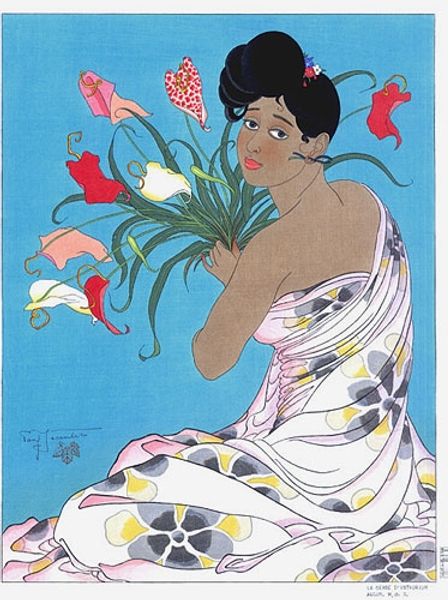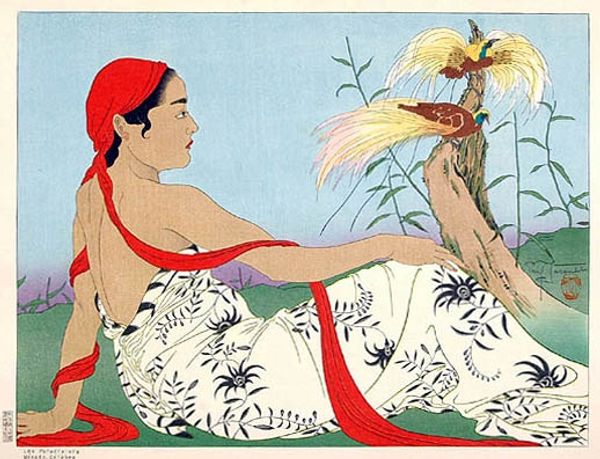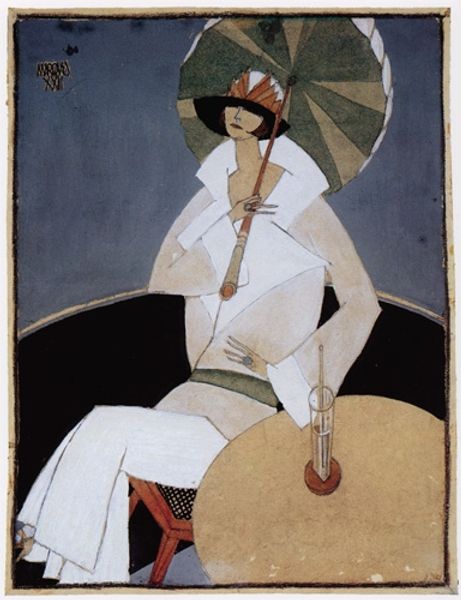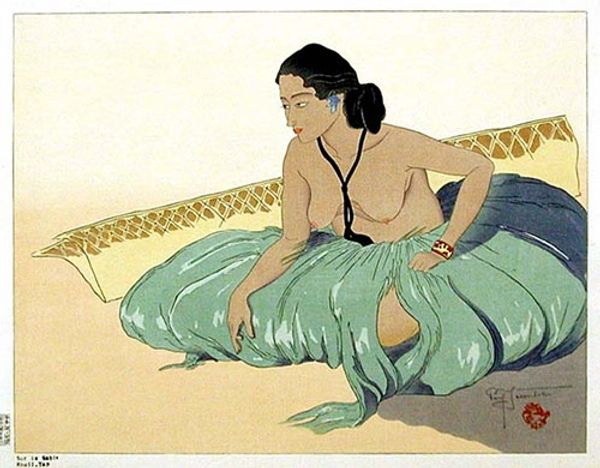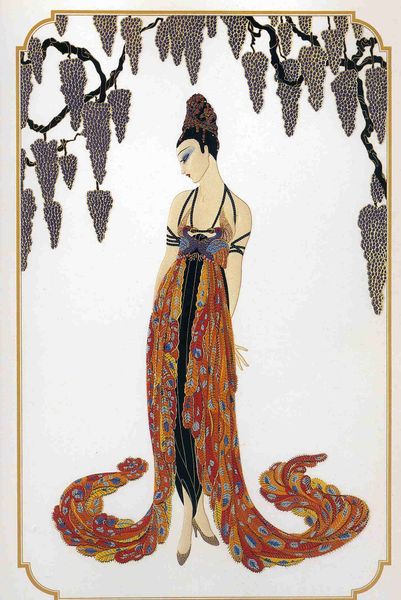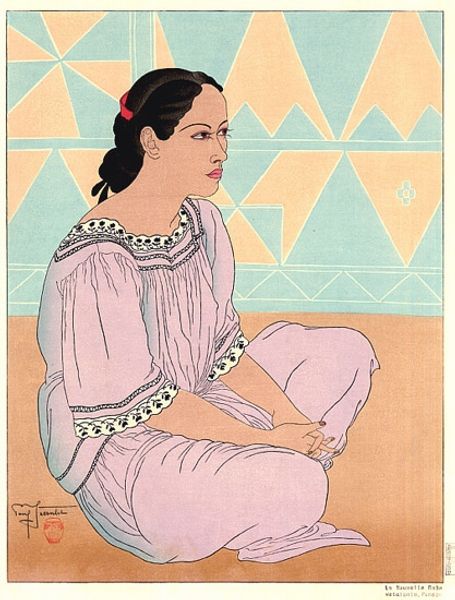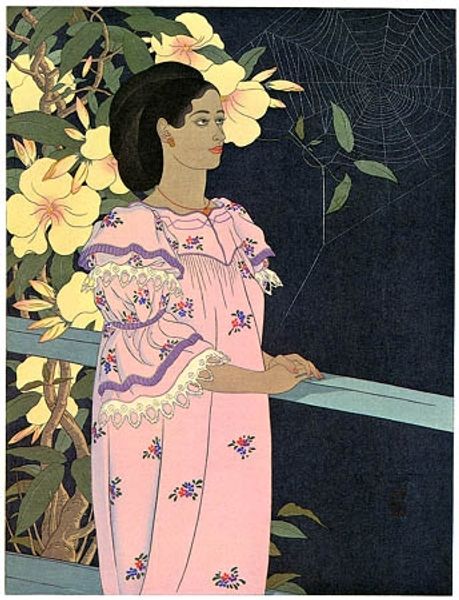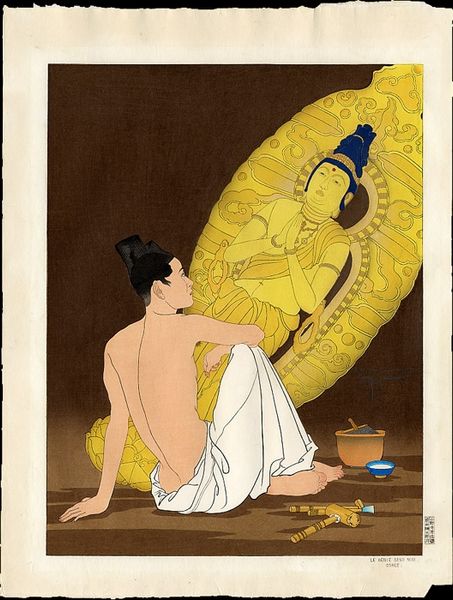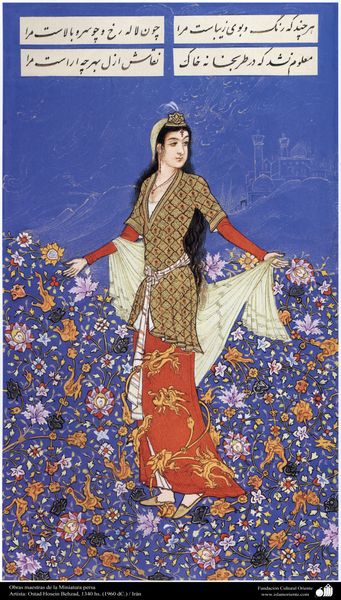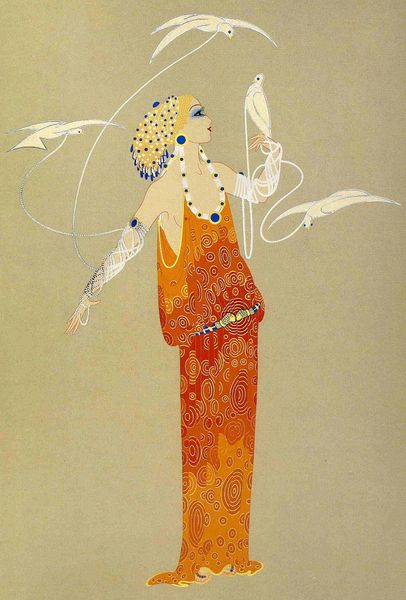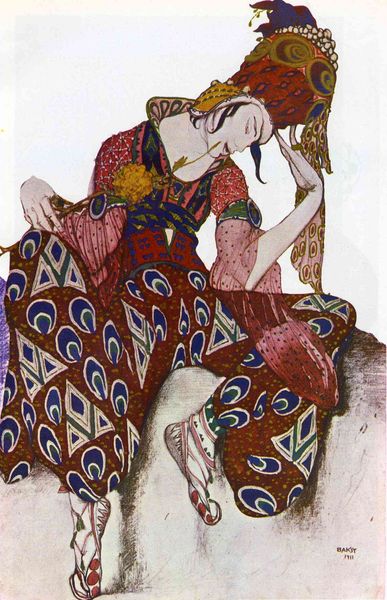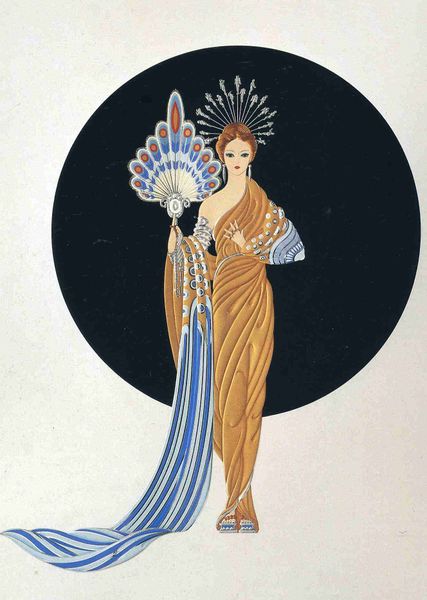
print, woodblock-print
#
portrait
# print
#
figuration
#
woodblock-print
Copyright: Public domain Japan
Editor: This woodblock print, "Apres La Danse, Celebes" by Paul Jacoulet from 1940, shows a woman in repose. She’s adorned in vibrant fabrics and an elaborate headdress, which creates a very peaceful and almost languid mood. How do you interpret this work, particularly considering its time and cultural context? Curator: This print is a potent example of Orientalism refracted through the lens of Japonisme. Jacoulet, a Frenchman working in Japan, depicts a woman from Celebes—now Sulawesi, Indonesia—in a manner that exoticizes her. The title, “After the Dance,” suggests a performance, framing her as an object of spectacle. How do you think this contributes to a potential power dynamic? Editor: That's a really good point. I was initially drawn to the colors and intricate patterns, but viewing it as a staged scene definitely changes my perspective. Is Jacoulet presenting an authentic portrayal, or is he projecting a Western fantasy onto this woman? Curator: Exactly! Consider the year, 1940, amidst global conflicts and shifting colonial powers. How might Jacoulet’s work reflect or even reinforce prevailing colonial attitudes? The detailed rendering, characteristic of woodblock printing, ironically lends an air of authenticity, potentially masking the constructed nature of the image. It also seems important to understand the woman’s expression—what does it say to you? Editor: She appears serene, even detached. It's hard to tell if it is peace or perhaps resignation. It's interesting how what I initially saw as beautiful, now seems a lot more problematic. Curator: It highlights the complexities inherent in cross-cultural representation. We are forced to consider issues of agency, authenticity, and the pervasive influence of power dynamics in art. It is a lens into historical power relations but also on contemporary cultural conversations. Editor: This makes me see the work in a completely different light, beyond just aesthetics. Thanks for this. Curator: It’s in grappling with these nuances that art history truly becomes relevant and revealing, encouraging us to be critical viewers of our own cultural biases.
Comments
No comments
Be the first to comment and join the conversation on the ultimate creative platform.
